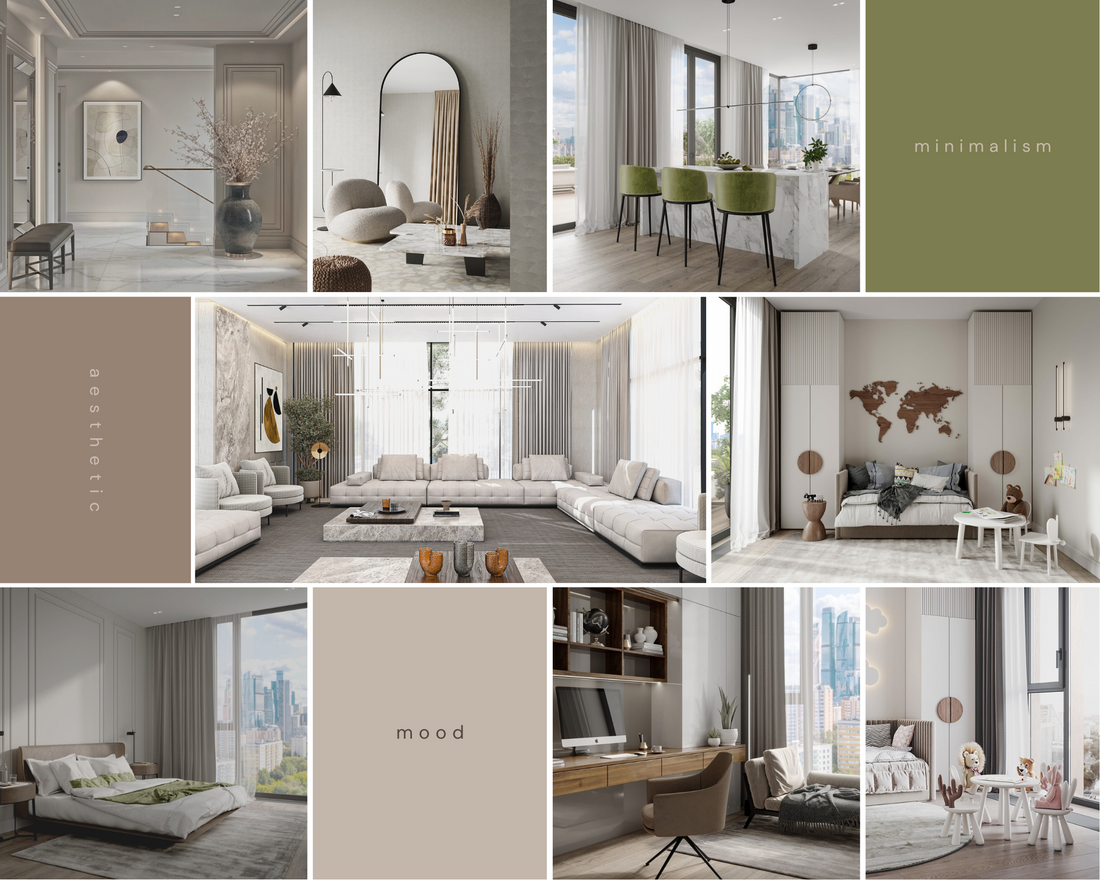
Choosing the Right Color Palette
The Power of Color Theory in Interior Design in Dubai
Have you ever stepped into a room and instantly felt a sense of calm or excitement? That almost magical feeling is the result of well-applied color theory, an essential tool in the world of interior design in Dubai. In Dubai, a city renowned for its luxury and innovation, initial impressions hold significant importance, with color frequently drawing attention. A thoughtfully chosen color palette can transform an ordinary room into an unforgettable space.
Whether it’s a sleek apartment in Downtown Dubai or a luxurious villa in Emirates Hills, the emotional impact of color can define the atmosphere. It's more than just aesthetics; color affects mood, energy, and even behavior, making it a powerful design element.
What is color theory?
Color theory is the artistic science behind how colors interact, combine, and influence perception. For professionals working in interior design in Dubai, mastering this concept is crucial. From opulent golds and desert neutrals to vibrant coastal blues, color theory helps create cohesive, visually appealing interiors that reflect the personality of both the client and the space.
It acts as a design compass that guides you through the world of palettes. Whether you're seeking a bold statement or a calm, minimalist retreat, understanding how to work with color is key.
Types of Color Palettes in Interior Design
Monochromatic Color Palette

This scheme uses variations of a single color; think tints, tones, and shades. It creates a unified, peaceful environment, perfect for serene bedrooms or spa-inspired bathrooms.
Complementary Color Palette
Using colors directly opposite on the color wheel, this palette creates high contrast and drama. It is ideal for vibrant living rooms or bold commercial spaces in Dubai’s creative districts.
Triadic Color Palette
Comprising three evenly spaced colors, this option delivers a balanced and energetic aesthetic. It works beautifully in dynamic environments like home offices or kids' play areas.
Analogous Color Palette
These are colors next to each other on the color wheel. They provide a subtle yet stylish look, great for achieving a natural, harmonious feel in open-plan villas or garden rooms.
How to Choose the Right Color Palette for Interior Design in Dubai
Understand the Space
Consider the purpose of the room. Are you designing a cozy bedroom, a sophisticated lounge, or a high-traffic kitchen? Think about the atmosphere you want to create and the functionality of the space.
Also, factor in elements like architectural style, natural lighting, and the size of the room. These details play a major role in how color is perceived.
Pick a Dominant Color
Choose a color that sets the tone. For instance, calming neutrals work well for tranquil spaces, while rich jewel tones can add a luxurious feel to formal areas.
Build Your Palette
Select complementary, analogous, or triadic combinations that suit your design vision. The 60-30-10 rule (60% dominant, 30% secondary, 10% accent) is a helpful guide for balance.
Watch for Undertones
Colors come with subtle undertones that can either harmonize or clash. Warm undertones (like yellow or gold) pair well with other warm shades, while cool undertones (like blue or gray) suit cooler palettes.
Stay Flexible
Always test colors in the actual space before committing. Lighting in Dubai, whether natural sunlight or artificial LED, can significantly change how colors appear throughout the day.
Final Thoughts
Choosing the right color palette for an interior design project is both an art and a science. In a city as dynamic and diverse as Dubai, color choices should reflect not only personal taste but also the unique character of each space. By embracing color theory and staying open to experimentation, you can craft interiors that are stylish, functional, and emotionally resonant.
In the world of interior design in Dubai, color isn’t just a detail. It’s a defining feature.
